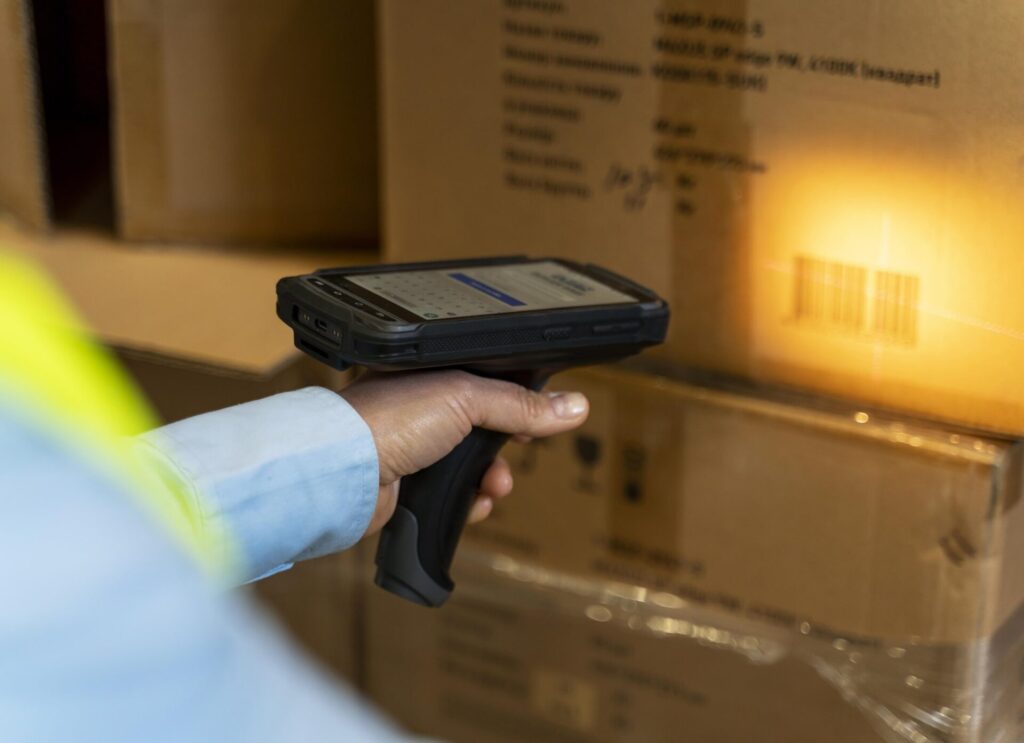
Why NMFC Codes Matter in LTL Freight
Less Than Truckload (LTL) shipping can be both cost-effective and flexible, allowing businesses of all sizes to send smaller quantities of goods without paying for an entire truck. However, LTL pricing and logistics rely on a standardized system known as National Motor Freight Classification (NMFC) codes, which help carriers categorize and rate different types of cargo.
This guide explains how NMFC codes work, why they’re critical in determining freight costs and class, and what can happen if you choose the wrong code. We’ll also explore how to use tools and resources to ensure you label your shipments accurately—ultimately avoiding extra fees, delayed deliveries, and damaged relationships with carriers.
Understanding the Basics of NMFC Codes
Definition and Purpose
At its core, NMFC is a publication managed by the National Motor Freight Traffic Association (NMFTA). Each type of commodity—from canned goods to machinery—gets assigned a specific code, which factors in four primary attributes:
- Density (weight relative to volume)
- Stowability (ease of fitting goods into a trailer)
- Handling (special care or equipment needed)
- Liability (risk of theft, damage, or perishable concerns)
These attributes combine into a class system ranging from Class 50 (dense, easy-to-ship items) to Class 500 (bulky or high-liability goods). An NMFC code essentially captures these characteristics, linking them to a specific freight class for pricing.
How NMFC Differs from Other Freight Classifications
Unlike proprietary carrier classifications, the NMFC system is universal among LTL carriers in North America. That means whether you’re shipping with a national carrier or a regional specialized service, the code for your product category should remain consistent. If you rely on your own classification system or guess your freight’s class, you risk reclassification fees when the carrier weighs or inspects your shipment and finds discrepancies.
The Role of NMFTA in Defining Freight Classes
NMFTA and Its Influence on Shipping
The National Motor Freight Traffic Association is a non-profit membership organization that standardizes freight classifications and fosters consistent shipping practices across the industry. By publishing the NMFC directory and regularly updating it, the NMFTA:
- Keeps Shippers Informed: Ensures new products or variations have codes.
- Promotes Fair Competition: Carriers can compete on service and pricing, rather than hidden classification tricks.
- Ensures Accuracy: Reduces confusion among carriers, shippers, and third-party logistics (3PL) providers.
The Structure of the NMFC Directory
The NMFC directory is organized by commodity types. Each commodity listing includes:
- Item Number: A code that references your product category.
- Description: Detailing the product’s nature and any special handling considerations.
- Sub Classifications: Variations based on density or packaging.
- Exceptions: Notes on conditions that might change the class (e.g., refrigeration or dangerous goods).
How NMFC Codes Affect Shipping Costs
Density, Stowability, Handling, and Liability
Understanding how a carrier calculates rates is essential if you want to avoid surprises:
- Density: A dense product typically falls into a lower freight class (like Class 60 or 70), leading to cheaper shipping rates.
- Stowability: Oddly shaped or large items may hamper efficient trailer loading, pushing up their class number.
- Handling: Fragile or hazardous goods needing extra care are often assigned higher classes.
- Liability: Valuable or easily damaged items also command higher rates.
Avoiding Costly Reclassifications
If a carrier suspects your declared NMFC code is off, they can re-weigh or reclassify your shipment. The result?
- Billing Adjustments: An invoice that’s higher than your original quote.
- Delays: Shipments might be held at terminals until classification is corrected.
- Reputation Damage: Frequent misclassifications can harm your relationship with carriers, who may impose stricter rules or fewer service options.
Common Misconceptions About NMFC Codes
Why “Guessing” Often Leads to Errors
Many shippers try to guess an NMFC code based on an item’s general category. For instance, if you think your product belongs to “machinery,” but it’s actually “electronic components,” you could use the wrong code. This is risky because:
- Different Codes: Even closely related products can have unique codes if they vary in density or fragility.
- Consequences: Carriers will eventually uncover the mismatch, leading to reclassification fees.
Real-World Consequences of Mislabeling
Imagine shipping a high-value printer under a code for basic office furniture. The carrier quickly notices the weight and fragility don’t match your stated class. You not only get billed for the correct, higher class, but you may also pay administrative reprocessing fees. Over time, repeated mistakes like these can damage your credibility and cost you valuable carrier relationships.
Determining the Right NMFC Code
Using the NMFC Guide and Resources
Locating the correct code often starts with:
- NMFC Directory: A printed or digital reference that organizes codes by commodity.
- Carrier Online Tools: Many carriers offer classification calculators or search features.
- Freight Brokers or 3PL: They typically have in-house experts to help with code identification.
A thorough knowledge of your product’s physical attributes—dimensions, weight, packaging style—is vital for an accurate classification.
Leveraging Carrier Expertise or 3PL Assistance
If you’re unsure which code applies:
- Contact the Carrier: Provide product specs, and they can guide you to the correct classification.
- Consult a 3PL: Third-party logistics providers often handle multiple product types daily and have a strong handle on classification best practices.
- Request an NMFC Opinion Letter: In certain complex cases, you can seek an official ruling from the NMFTA for added clarity.

Special Handling and Exceptions
Hazardous Materials and Unique NMFC Rules
Hazmat shipments have added complexities:
- Regulatory Compliance: DOT mandates proper labeling, packaging, and classification.
- Higher Liability: Because these materials pose more risk, classes and charges may rise.
- Carrier-Specific Restrictions: Some LTL carriers won’t move certain hazmat categories, so verifying your code is crucial to avoid service denials.
Oversized or Irregular Freight
Large machinery or oddly shaped items can have special exceptions under the NMFC. These exceptions might:
- Increase Freight Class: If the item is unwieldy or difficult to stack with other shipments.
- Require Custom Crating: Sometimes mandated by the code to ensure safe transport.
- Command Surcharges: For example, an “oversized freight” surcharge if an item exceeds standard dimensions.
Verifying and Updating Codes Over Time
Product Changes and Packaging Adjustments
Products evolve. A once-compact design could become bulkier, or a new packaging method might reduce density. Either change can impact your NMFC code:
- Periodic Reviews: Reassess the freight class whenever product specs change.
- Prototype Testing: For brand-new items, consult carriers or the NMFC directory early to preempt classification errors.
Annual NMFC Updates and Revisions
The NMFTA periodically updates codes to reflect industry changes—new products, new materials, or refined definitions:
- Stay Current: Follow NMFTA announcements, or check with carriers who typically disseminate these changes to shippers.
- Adjust Processes: If a code is revised upward, your costs might rise unless you adapt your packaging strategy to maintain a lower class.
Impact on Documentation and Labels
Integrating NMFC into the Bill of Lading (BOL)
The BOL is the primary contract between shipper and carrier. It must align with your NMFC classification:
- Item Descriptions: Mention the code or the class in the product line item.
- Accuracy: If the BOL lists an outdated code, your load is at high risk for reclassification.
The Link Between NMFC Codes and Freight Class
Freight classes are often simplified into codes like “Class 70” or “Class 125,” which shippers might enter on the BOL. The NMFC code underpins that class. Carriers use the combination of code and declared weight to confirm the correct rate:
- Double Check: Always ensure the code you list matches the actual commodity or packaging.
- Cross-Reference: Some carriers require both the NMFC code and the class for clarity.
Avoiding Rate Discrepancies and Audits
Reducing Reweigh and Inspection Triggers
Carriers frequently reweigh shipments that seem misclassified:
- Automated Checks: If your declared weight or dimensions deviate from the code’s typical range.
- Spot Inspections: Random checks or triggered by suspicious packaging.
Accurate NMFC codes minimize these disruptions, preventing delayed deliveries and unexpected fees.
Negotiating Accurate Rates with Carriers
Armed with the right NMFC data, you can more confidently negotiate shipping contracts or get quotes:
- Transparency: Carriers appreciate shippers who classify properly, often rewarding them with stable rates.
- Volume Discounts: If you consistently ship the same well-classified item, you’re more likely to secure favorable, predictable pricing.
Technology Tools to Simplify NMFC Code Management
Digital Freight Platforms and TMS
A Transportation Management System (TMS) or digital freight platform may include:
- Automated Code Lookups: Suggesting an NMFC code based on product descriptions.
- Dimensional Scanning: Automated dimensioners can capture size and weight, verifying your declared data.
- One-Stop Tracking: Combine classification, documentation, and real-time shipment tracking.
Automated Classification Software
Some shipping solutions can automatically assign classes or codes by analyzing product attributes from your inventory system. This approach reduces human error but demands accurate product data at the outset:
- Integration: Tools may sync with your ERP or e-commerce platform for product specs.
- Machine Learning: Advanced platforms refine suggestions over time, especially if you rectify classification errors.
Common Mistakes and Pitfalls
Outdated Codes and Overlooked Updates
If your team uses a code from years ago—unaware it’s been revised or replaced—carriers can reclassify your freight. Regular code reviews:
- Maintain Compliance: Keep you in sync with NMFTA updates.
- Boost Credibility: Carriers trust shippers who show they’re up-to-date.
Incorrect Density Calculations
Many items have subcategories in the NMFC directory based on density brackets:
- Calculate Carefully: Don’t skip measuring how your items fit into their packaging.
- Include Packing Materials: Pallets, bubble wrap, crates—everything in the final shipping form influences the density.

Success Stories: Companies That Benefit from Proper Coding
A Manufacturer Saving on Shipping Costs
A Midwest manufacturer producing metal fasteners discovered they’d been using a higher freight class for years. By recalculating the density and verifying the correct NMFC code, they dropped their overall class from 85 to 60, saving thousands in annual shipping costs.
A Retailer Reducing Invoice Disputes
A home décor retailer frequently shipped ceramic vases but had the wrong code classifying them as higher-liability glassware. After correcting their code, invoice disputes over reclassifications plummeted, and deliveries faced fewer terminal inspections.
Working with 3PLs and Brokers for Code Accuracy
Why Third-Party Logistics Pros Often Know Best
3PLs handle a diverse range of commodities daily. Their classification teams or automated systems are typically well-versed in:
- Identifying Codes for Similar Items: Drawing on a broad knowledge base.
- Tackling Complex Loads: They know how to handle partial shipments with multiple product types.
- Negotiating with Carriers: If a reclassification occurs, a 3PL can quickly intervene on your behalf.
Defining Roles and Responsibilities in Contracts
If you rely on a 3PL:
- Clearly State: Who is responsible for verifying NMFC codes, you or the 3PL?
- Liability Clauses: If misclassification leads to extra fees, clarify who pays.
- Ongoing Audits: Encourage periodic code reviews to remain current with any product changes.
Conclusion
NMFC codes are the backbone of LTL freight classification, dictating everything from your shipping rate to the likelihood of reweighs and reclassifications. By carefully determining and consistently reviewing these codes, you minimize unnecessary costs and keep your freight moving smoothly. Whether you manage LTL shipping in-house or rely on carriers and 3PLs, an accurate NMFC code fosters transparency, trust, and operational efficiency.
In short, a correct NMFC classification can spell the difference between a quick, seamless delivery and a drawn-out, expensive logistics headache. Make sure you invest the time and resources to get it right—you’ll protect your budget, your carrier relationships, and your brand’s reputation for reliable shipping.
How useful was this post?
Click on a star to rate it!
Average rating 0 / 5. Vote count: 0
No votes so far! Be the first to rate this post.



